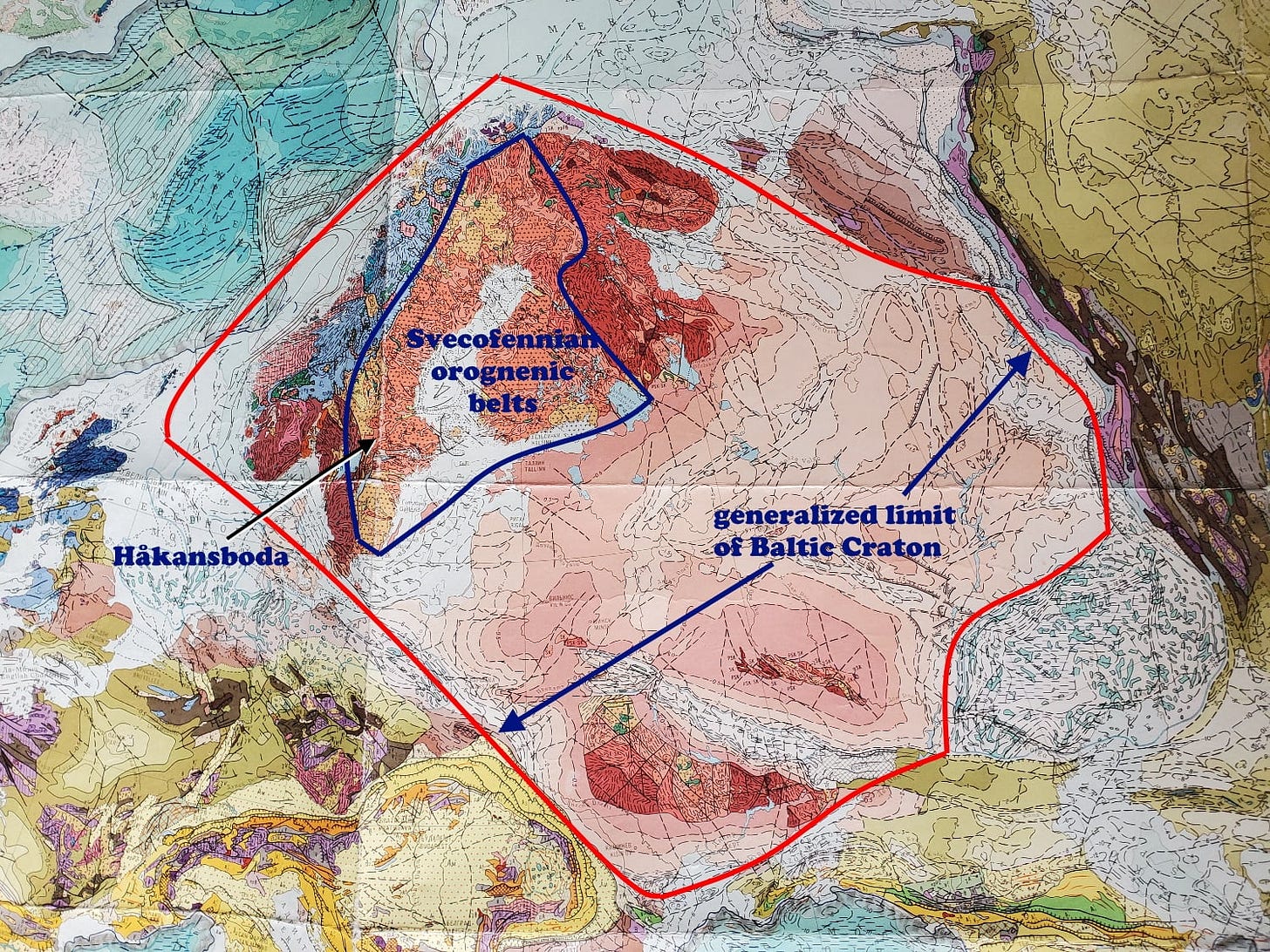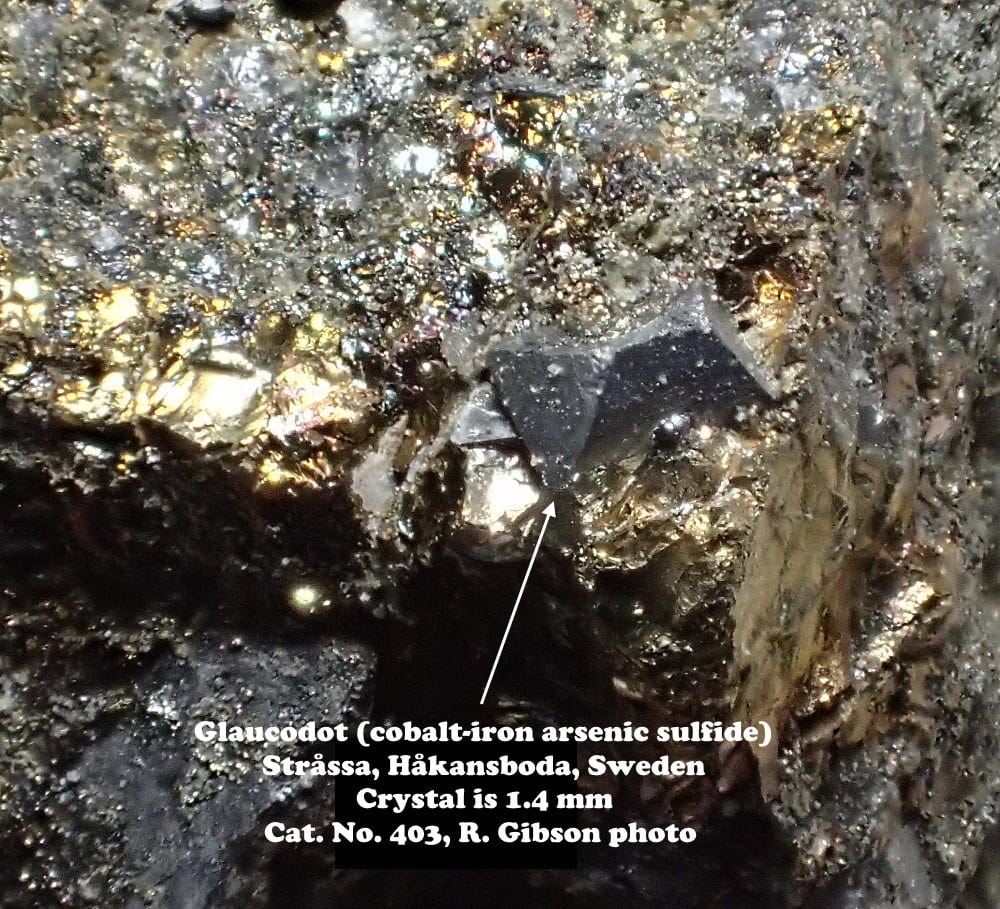Life in the USA is not normal. It feels pointless and trivial to be talking about small looks at the fascinating natural world when the country is being dismantled. But these posts will continue, as a statement of resistance. I hope you continue to enjoy and learn from them. Stand Up For Science!
Glaucodot is cobalt-iron arsenic sulfide, (CoFe)AsS, a member of the arsenopyrite (iron arsenic sulfide) group. Its unusual name, with no “-ite,” was given in 1849 by August Breithaupt and Karl Friedrich Plattner from the Greek γλαυκός, glaucos, for “sky-blue” and δίδω, dido, “to give,” because of its use in giving blue color to smalt glass, which is blue because of the cobalt +2 ion.
My label says it is from Shassa or Stiassa, Sweden, but I’m told by a Swedish mineral expert that it is most likely from Håkansboda, Sweden, a well-known copper-cobalt deposit where mining started about 1400 and continued again sporadically in the 1540s. Mining there was most active from 1702 to 1873, yielding a total of about 2,100 tons of copper and 7 tons of cobalt (Tegengren, F., 1924, Sveriges ädlare malmer och bergverk (in Swedish; Sweden’s noble ores and mines): SGU ser Ca17, Stockholm).
At Håkansboda, the host rocks, dolomitic marbles, were deposited about 1,910 to 1,890 million years ago (the Paleoproterozoic part of the Precambrian) and were metamorphosed and folded by tectonic, volcanic, and intrusive activity that occurred relatively soon after deposition, by about 1,860 million years ago according to Månbro (2021, The Geology and Geochemistry of the Håkansboda Cu-Co deposit, Bergslagen, Sweden: Stockholm University, Master’s Thesis). The cobalt sulfides occur in stratabound lenses and layers within the metamorphosed Håkansboda limestone/dolomite, in the overturned eastern limb of the Guldsmedshyttan syncline, a large fold that was refolded (F2) in the vicinity of the Håkansboda deposit. The copper and cobalt are thought to have come in from the volcanics and intrusives associated with the tectonic activity.

The mountain-building activity (orogeny) that resulted in the geologic structures and mineralization at Håkansboda was part of the Svecofennian Orogeny, whose features crop out in much of Finland and eastern Sweden today. The orogeny is interpreted to be a four-phase subduction cycle that might have been interrupted by some extensional episodes, but the ultimate result was the amalgamation of older, smaller cratonic blocks to form the core of today’s Baltic or East European Craton.
Thanks to the Master’s Thesis cited above, I discovered that my original label is probably correct, but it should be read “Stråssa,” which is a mine in the Håkansboda district. The Stråssa mine is in banded iron formation (BIF) a little older than the Håkansboda limestone. Banded iron formations generally represent the worldwide increase in oxygen in earth’s oceans, and there are few BIFs younger than 1,800 million years ago, so those around Stråssa are among the younger.
As you may know I really enjoy learning so much by starting with a tiny, 1.4-millimeter crystal of some weird mineral. This little glaucodot crystal filled that bill admirably. Cobalt in the Håkansboda district also occurs in cobaltite, cobalt arsenic sulfide, where it is associated with at least 44 other minerals including some uranium compounds.




